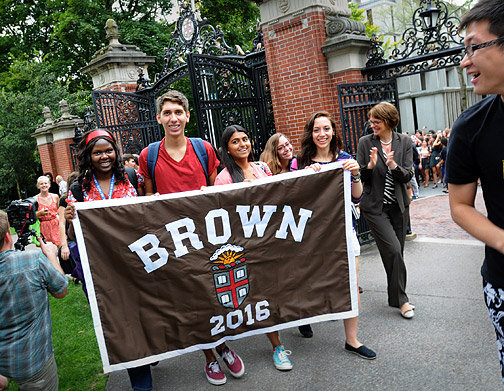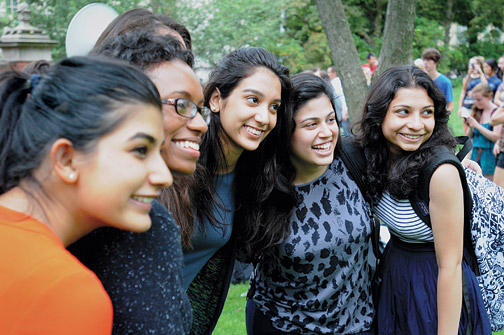The members of the Class of 2016 are too smart to put much stock in omens. They better be. At Opening Convocation on September 5, driving rain and occasional lightning robbed them of the opportunity to actually walk onto campus through the Van Wickle Gates. (Some of them got a second shot at it the following day, when the Gates were left open.)

“As the nineteenth President of Brown University,” Paxson began, “it is my great pleasure to declare the 249th academic year of Brown University open.” The students responded with thunderous applause. “Welcome to an extraordinary university at an extraordinary time in our almost 250-year history. I am so happy sharing my inaugural year with you.”
Paxson urged the students to explore “the terra incognita of the University” with an attitude of “constructive irreverence” and even heresy, which she said characterized Brown’s style of teaching and learning: “consistently asking yourself if theories are in fact logical, if evidence is watertight and … putting forth new ideas that challenge the accepted wisdom of the day, but listening with an open mind to the ideas of others.”

A friend who was a philosophy major told her that her problem was that
she didn’t understand the proof at all. He suggested she try another
approach: to write an essay in support of St. Anselm’s position. “This
was the best advice I ever received as a student,” Paxson said. “What
he was asking me to do in essence was to approach the work of an
eleventh-century cleric with the sense of respect it deserved.”
In this way, she said, she came to understand that intellectual freedom
means not a knee-jerk rejection of authority, but a genuine attempt to
understand and appreciate what it has to offer. One cannot
honestly reject what one doesn’t understand.
“To apply constructive irreverence to the world and all of life beyond the [Van Wickle] Gates is your challenge,” Paxson told the students. “And your destiny.”





